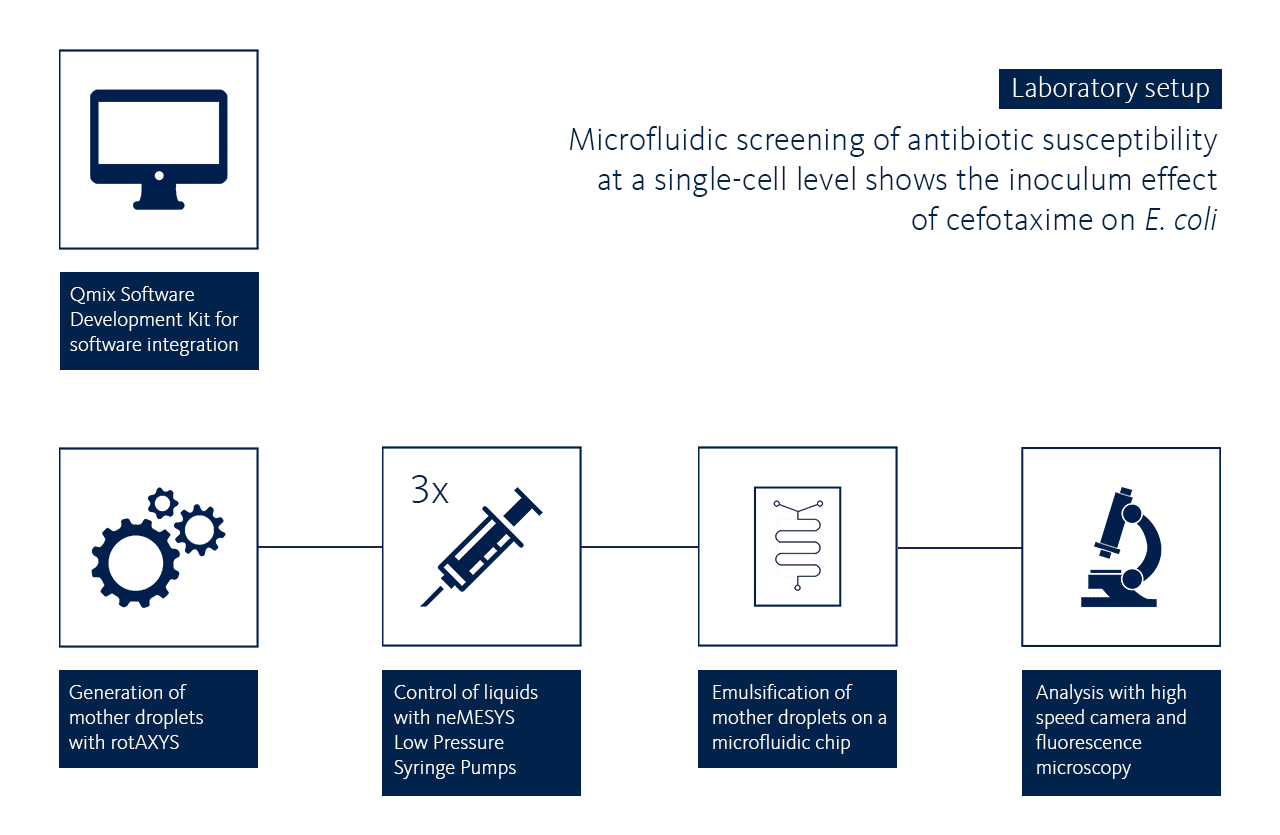Postek et al. demonstrated an automated high-throughput screening for MIC determination (minimal inhibitory concentration) of an antibiotic in nanolitre droplets for different E.coli concentrations. With the help of the specially developed DropChop chip, different physically separated compartments can be generated. With the resulting ultra-small sample volumes, comprehensive test series can subsequently be carried out with maximum efficiency and large scaling.
Laboratory Setup
In this study, µl-volume droplets of different E.coli dilutions were automatically generated by neMESYS syringe pumps in combination with the versatile rotAXYS miniature positioning system. These µl-volume droplets were then transferred into nL-volume droplets within a compartment using the DropChop chip, which was specially developed for this specific application, then cultured and subsequently comprehensively analyzed using fluorescence microscopy.
This application illustrates the advantages of the CETONI product philosophy: Thanks to the modular system design, various devices could be combined effortlessly and integrated easily into the customer’s software environment via the practical CETONI software development kit. The precisely controllable rotAXYS facilitated the fully automated and precise processing of µl-volume droplets by the neMESYS syringe pump system from a 96-well microtiter plate. The reproducible generation of these uniform small droplets was mainly achieved by the interruption-free motion characteristics of the neMESYS syringe pumps, while the physical separation of subsequent emulsions was achieved with the easy programming of the pump protocol of operations with the Qmix software.
The CETONI system also easily met the requirements of a sterile working environment with the right accessories.
Used CETONI devices:
- Base 120
- 3 x Low Pressure Syringe Pump neMESYS 290N
- Compact Positioning System rotAXYS
Literature:
Postek W., Gargulinski P., Scheler O., Kaminski T. , Garstecki P. Microfluidic screening of antibiotic susceptibility at a single-cell level shows the inoculum effect of cefotaxime on E. coli







